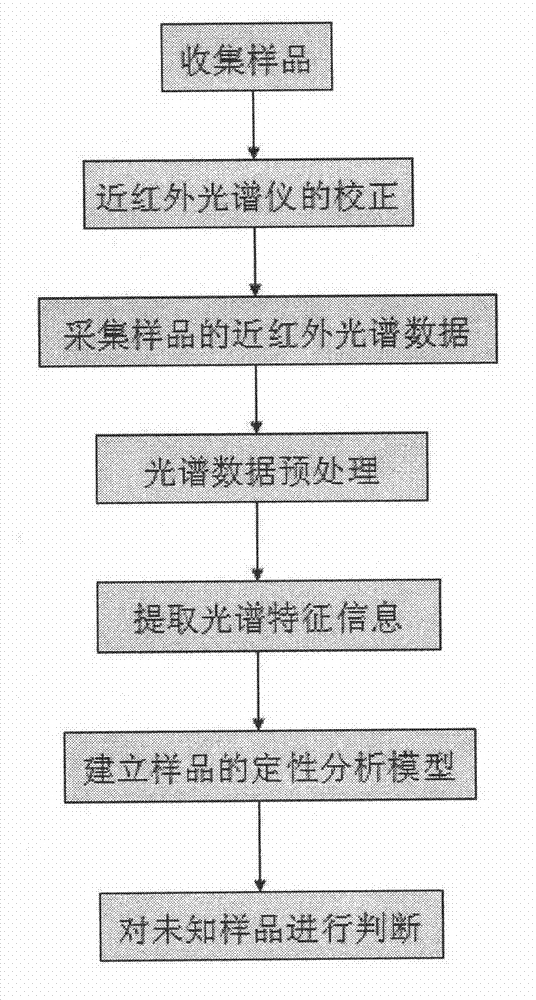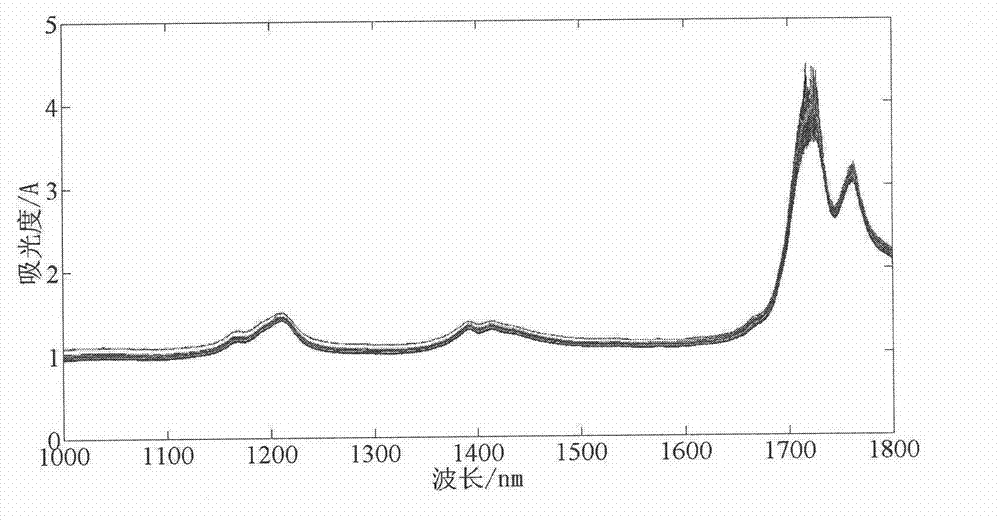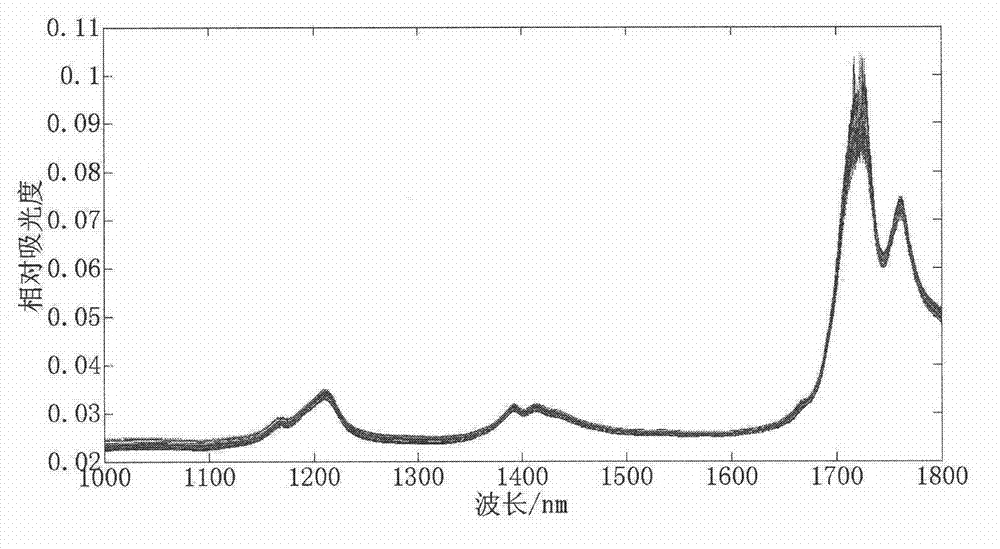Method for quickly identifying food waste oils based on near infrared spectroscopy
A technology of near-infrared spectroscopy and near-infrared spectrometer, which is applied in the field of identification of food waste oils and fats, can solve problems such as no relevant reports, and achieve the effects of faster analysis, lower skill requirements, and high automation
- Summary
- Abstract
- Description
- Claims
- Application Information
AI Technical Summary
Problems solved by technology
Method used
Image
Examples
Embodiment
[0039] A method for quickly and non-destructively identifying waste catering oils and fats based on near-infrared spectroscopy. The specific steps are as follows:
[0040] (1) Collection of samples: the used catering waste oils and fats used in this example are 119 samples of gutter oil and swill oil obtained after two different refining degrees of deodorization and decolorization; normal edible vegetable oils (including 59 parts of soybean oil, 33 parts of peanut oil, 26 parts of blended oil and 29 parts of olive oil) all came from different brands of major supermarkets or different batches of the same brand, a total of 147 samples. According to the different types of oil samples, we divided them into five categories, and randomly selected more than 1 / 4 of the samples from each category as the test set, and the remaining samples were used as the calibration set. The specific composition and classification of the samples are shown in Table 1. shown.
[0041] Table 1 Compositi...
PUM
 Login to View More
Login to View More Abstract
Description
Claims
Application Information
 Login to View More
Login to View More - R&D
- Intellectual Property
- Life Sciences
- Materials
- Tech Scout
- Unparalleled Data Quality
- Higher Quality Content
- 60% Fewer Hallucinations
Browse by: Latest US Patents, China's latest patents, Technical Efficacy Thesaurus, Application Domain, Technology Topic, Popular Technical Reports.
© 2025 PatSnap. All rights reserved.Legal|Privacy policy|Modern Slavery Act Transparency Statement|Sitemap|About US| Contact US: help@patsnap.com



